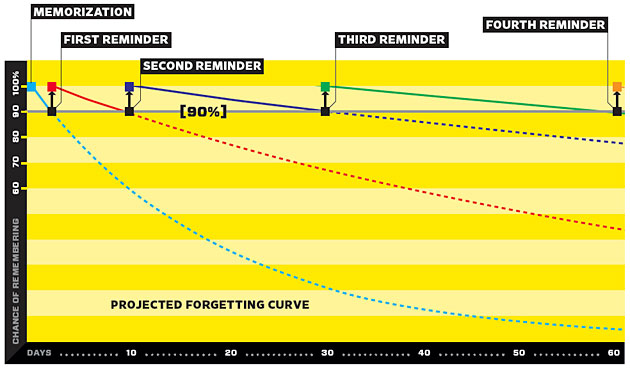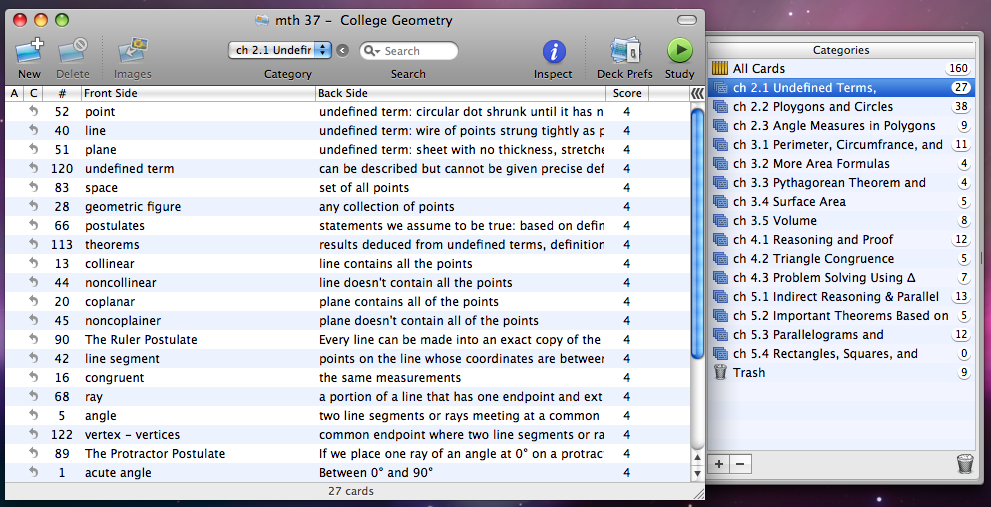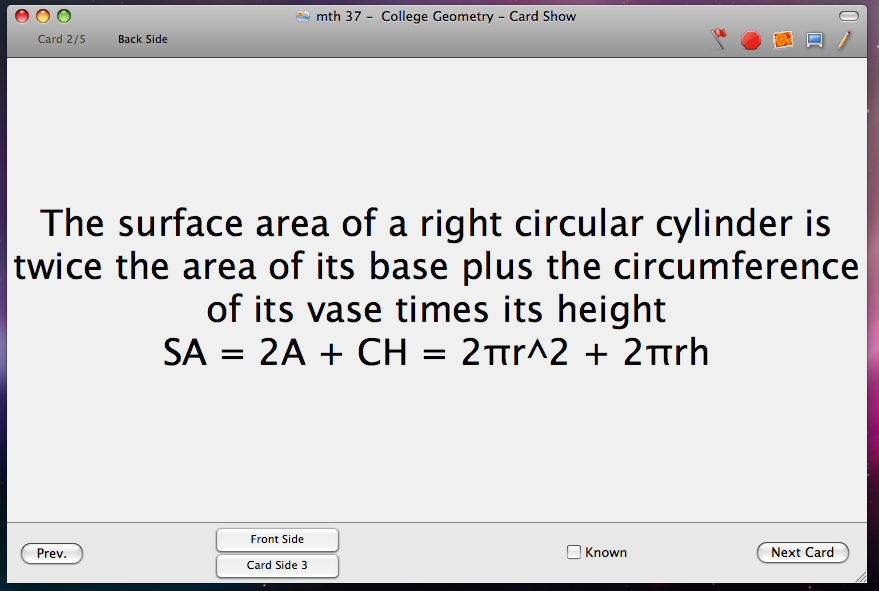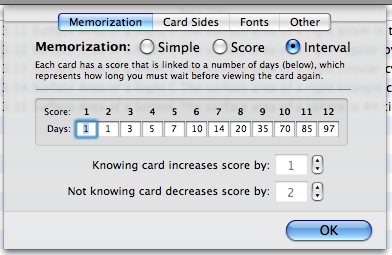New Ways of Learning – iPhone Solutions
I’m nearly finished with general education at Las Positas College. With a new fascination and respect for institutionalized acquisition of general knowledge, I hoped my education would change my life, and it did. However and unfortunately, I forgot many bits diligently studied, from details of US History and Health to Psychology and Astronomy. Sure, I remembered a collection of concepts and terms directly relevant to projects and arts, but what about the other ideas that could form into further inspiration – they are stowed away deep in the vault.
In my new educational venture, I learned how to get an A, and I studied for an A. I also learned getting an A doesn’t mean I will remember the concepts, nor does a degree alone – regardless of grade point average – make me the best liberal student and artist I can be. I wanted general concepts to be readily accessible, yet they were buried below every day motions of survival. Was my only option to forget?
Several months ago I read an article by Gary Wolf in Wired magazine about remembering what you learn, Want to Remember Everything You’ll Ever Learn? Surrender to This Algorithm.
I was fascinated!
The article is about Piotr Wozniak’s discovery and usage of an algorithm that determines when we forget things. As mentioned in Wolf’s article, scientists discovered that individuals tend to retain information the best when studying just before the point they’re most likely to forget. In addition, Hermann Ebbinhaus, one of the scientists, found that spacing one’s study sessions dramatically improves learning and memorization. With these notions in mind, Wozniak created SuperMemo, a program utilizing an algorithm for determining the better time to study. SuperMemo adjusts to your own forgetting curve, i.e., it tells you to study at the time your most likely to forget.
Here is an image from Wired magazine demonstrating the forgetting curve:

I was very impressed by the article and inspired by Wozniak’s venture and direction, so I looked into SuperMemo. The application is built for PCs, and I’m on a MAC. Unfortunately, I only had access to the web program, and the interface felt very dated.
In addition, I wanted a portable solution: something I could use while on the bus or riding the train. This is where the iPhone comes in. With a good application, the iPhone could be the ultimate studying device, so I began searching for other possibilities.
I Googled and found an application by David McGavern called iFlash, kind of like iTunes for flash cards. It seemed very easy to manage, so I decided to give iFlash a run with two summer courses, Multicultural Psychology and Geometry with Trigonometry.
Application files are managed like decks of cards, and each deck is allowed any number of custom categories: like a play list in iTunes. For my setup, I created decks for both of my classes, and I use a new category for each chapter. I typically type notes into text files (utf-16 for math symbols) and load them into application files.
As for the interface, as mentioned, it’s very intuitive and easy to use. Following are images from the main card browser window and two views (front and back) of a card show:



Each deck, application file, is allowed a memorization system: Simple Memorization (good for cramming), Score Memorization (good for short term studying), and Interval Memorization (good for long-term studying). Interval Memorization is a customizable version of the spacing technique of studying – which I was most interested in. The application doesn’t use as an algorithm that automatically adjusts to your forgetting curve, but it allows you to manually adjust to study intervals.
Here is an image of the interval adjustments:
 :
:
Importantly, there is an iPhone version of iFlash in the works!
I would love to see statistics, graphs, and projections for upcoming studies, i.e., a calendar saying how many upcoming cards. For now, the application on my Macbook is doing wonders – in addition, I’m ecstatically anticipating the release of the iPhone version.
Notably, an iFlash demo is available for free. I purchased the licensed version well before my demo expired, a worthy and inexpensive investment of $14.95. Maybe, with our support, David McGavern of Loopware will include statistics and study projections in a future release!
I was considerably inspired by Wolf’s article on Wozniak, and I highly recommend the article. With this inspiration, I will practice the spacing technique of learning over the summer semester, and I will develop this technique through the rest of my education. Despite the lack of an automated forgetting curve algorithm, iFlash provides a simple and intuitive way for managing the spacing technique, and a similar Phone application will prove to be invaluable.
Resources and Links
Want to Remember Everything You’ll Ever Learn? Surrender to This Algorithm: 04.21.08, Gary Wolf, Wired Magazine, Issue 16.05
SuperMemo: devoted to improving memory, self-growth, creativity, time-management, and speed-learning
iFlash: Mac OS X studying and learning flash card simulator, iPhone version coming soon
Piotr A. Wozniak: Founder of SuperMemo and a very interesting person. I browsed his website, full of useful information, and I will certainly look more into it.